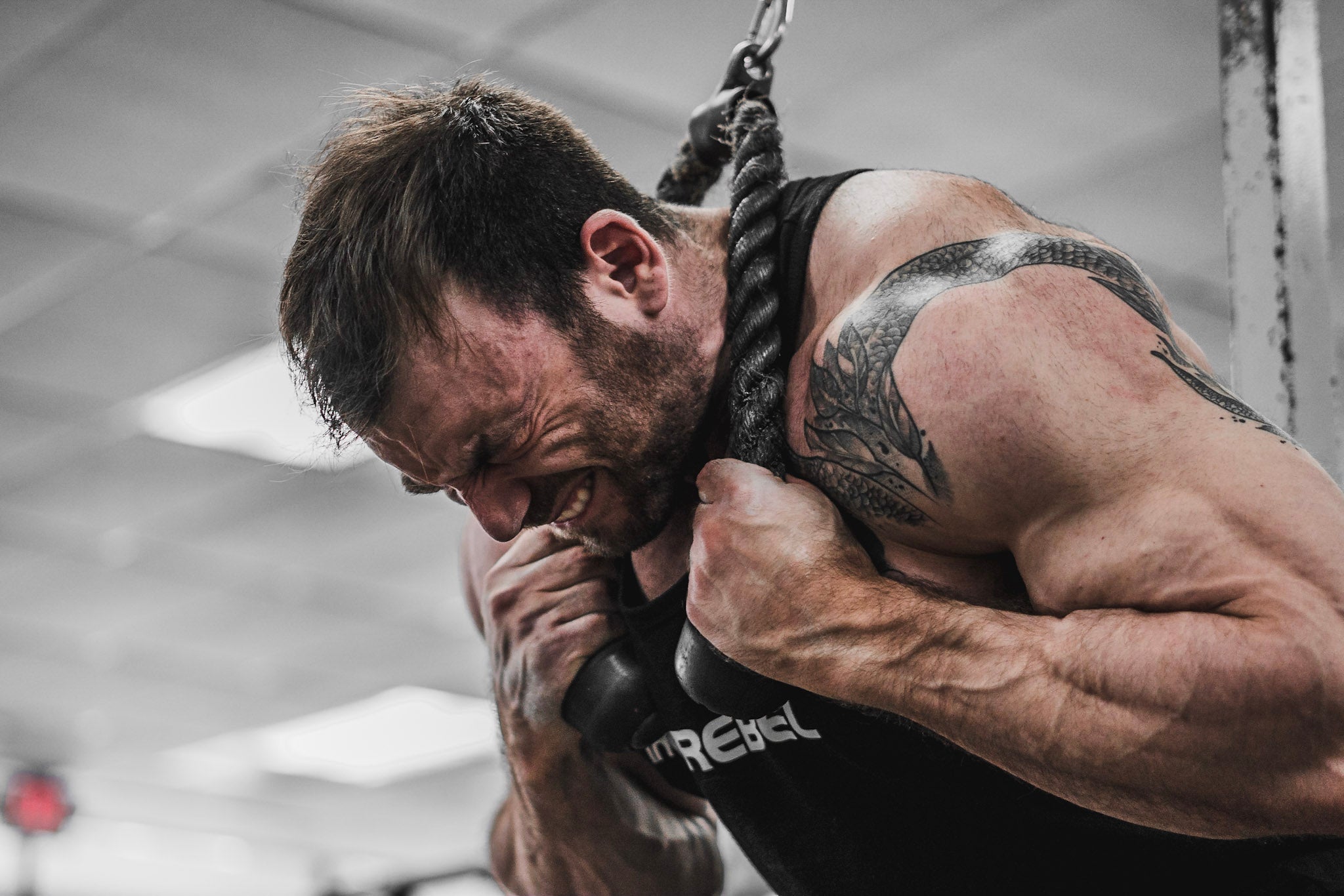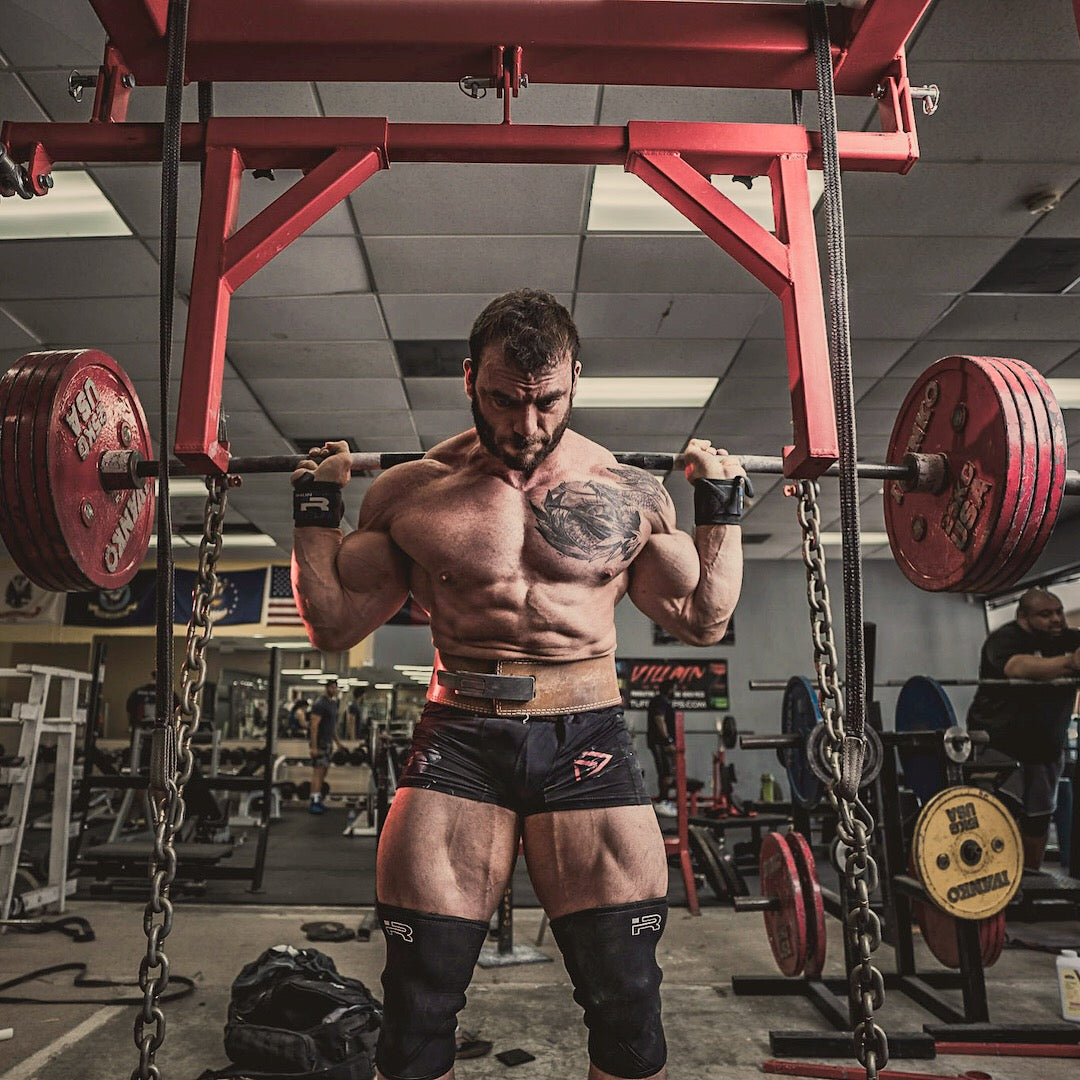Obviously, better knee wraps alone won’t magically let you squat 800 pounds, but if you think that you’re not getting much carryover (and you’re using a good wrap like the Iron Rebel Outlawas), then you could probably do better. A lot of guys will go on and on about how much harder it is to squat in knee wraps than in sleeves, and that’s sometimes true. Many lifters have to adjust their entire squatting technique to adapt to wraps. But it’s even more important that you choose the right style of wrap for your squat, and wrap your knees in the right way.
What’s the right style? Well, if you’re a raw squatter, you’re probably only concerned about rebound: the more the better. Most raw squatters don’t benefit from too much casting. It’s worth considering tightness, too: tighter wraps tend to give more rebound, but they’re usually uncomfortable, especially for rep work. For the majority of your training, you might want to lean towards a wrap with less tightness but still a good amount of rebound, like the Rhinos. For heavy singles and competition, you’ll want something like the Outlaws.
Picking wraps should be fairly straightforward. Don’t overthink this: if you try a wrap and really like that style, stick with it.
How to Wrap
This is a little more complicated, so make sure you watch the video above — but in the meantime, here are the key points:
- Carryover from knee wraps comes primarily from the stretch. More stretch means a bigger squat.
- All the carryover in the world won’t matter if you can’t hit depth.
- Tighter is NOT always better.
None of those points is especially obvious, so let’s go one step deeper.
More Stretch, More Carryover
When you’re wrapping your knees, you can start halfway up your quad and wrap halfway down your calf. But if you do that, when you go to squat, the part of the wrap on your quad or calf won’t stretch all that much. In fact, the wrap really only stretches right around your knee cap — you’ll get a little stretch from the rest of it, but that’s pretty negligable.
Carryover — and by that I mean the ability to squat more weight — comes from the rebound effect that occurs when the stretched wrap returns to its normal length (think about flicking a rubber band across the room). All (well, much) of that energy can be transferred into extending your knee, helping you get out of the hole. And, just like when you flick a rubber band, the more you stretch the wraps, the more energy you have to help you extend your knee.
So that means you want to only wrap around your kneecap, right? Well, maybe.
You Must Hit Depth
There are a few complications. Knee wraps are pretty long, and if you only wrap around your kneecap, you’ll end up with a whole bunch of material there. You’ll end up with so much material, in fact, that when you try to descend, the wrap might bunch up under your knee so much that it prevents you from reaching depth. That’s a problem, and it’s especially noticeable with thicker wraps. It can be solved, obviously, by wrapping higher up on the quad and/or lower on the calf so that there’s less material behind the knee. That means sacrificing some rebound, but it really doesn’t matter, since a squat doesn’t count in the first place if you don’t hit depth.
Now, I’ve really only focused on rebound to this point, but wraps are usually evaluated on at least two dimensions: rebound and casting. Casting is just what it sounds like: a wrap with a lot of casting will feel very stiff, and help you descend in a more controlled manner. Some wraps, like the Elitefts Super Heavies, will even stop you at a certain point during your descent (hopefully just below parallel).
Now, generally, a wrap with more rebound will have less casting, and vice versa, but that’s only true to an extent (more on this in the next section). Regardless, if your wrap has so much cast that it prevents you from hitting depth, that’s obviously not a good wrap for you, no matter how much rebound it provides or how much you like it otherwise.
Tighter Isn’t Always Better
When most people describe how to wrap knees, they’ll focus on tightness, claiming that you need to get those fuckers as tight as humanly possible if you want to get the most out of them. Now, with some wraps, that’s true. But for others, wrapping more tightly means that you’ll get less rebound and more casting out of them.
There’s also comfort to consider. Now, if your goals involve reaching your maximum strength potential, I’ll be honest, you need to just suck it up if good wraps hurt. But plenty of people aren’t looking for that, for good reason: maybe you’re more concerned about leg development, or you are only using wraps for overload, or maybe you just lift for fun. Regardless, if you’re not too hung up over lifting as much as you possibly can, then there’s really no great reason for using wraps that hurt. And that’s fine: choose a more comfortable wrap, or just wrap a little more loosely. The only caveat is that some competition wraps, like the Kraits, will over nearly no benefit unless they’re cranked hard, but most moderate wraps will be just fine a little loose.
Hopefully, this article has given you a lot of ideas to try. In the next entry, I’ll share some of the ways you can incorporate wraps into your training, even if you usually prefer sleeves.
Read more
What to do when you can't chill out after training.

Weighted planks are one of my favorite exercises for the core. I generally prefer static-strength movements for abs, for two reasons:1. The abs function as a stabilizer in the powerlifters. I’m gen...


Leave a comment
All comments are moderated before being published.
This site is protected by hCaptcha and the hCaptcha Privacy Policy and Terms of Service apply.